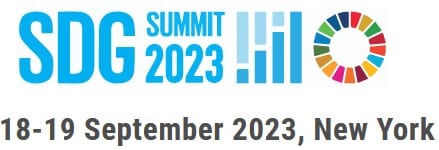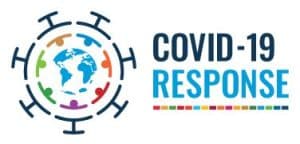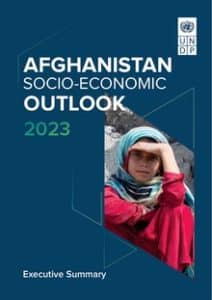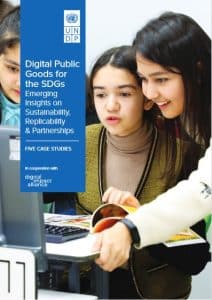New UN websites & publications
UN in General
Our Common Agenda: Policy Brief 3: Meaningful Youth Engagement in Policymaking and Decision-making Processes (April 2023)
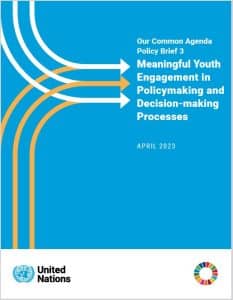
French: https://www.un.org/sites/un2.un.org/files/our-common-agenda-policy-brief-youth-engagement-fr.pdf
Spanish: https://www.un.org/sites/un2.un.org/files/our-common-agenda-policy-brief-youth-engagement-es.pdf
German: https://www.un.org/Depts/german/gs/OurCommonAgenda-Youth-Engagement.pdf
English, French & Spanish: https://undocs.org/A/77/CRP.1/ADD.2
The third brief in this series presents a series of bold proposals from the Secretary-General with a view towards ensuring more meaningful, diverse and effective youth participation across intergovernmental decision-making processes at all levels. The recommendations draw directly from inputs we have heard from Member States, UN partners, and most importantly from young people themselves — in recent years, more than 12 million young people across more than 194 countries have voiced their views on the future of multilateralism via a diverse range of consultative processes (including the My World Surveys, the UN75 Global Listening Exercise and Plenary, the Next Generation Fellows, and inputs to the Human Rights Council, the ECOSOC Youth Forum and the Security Council, among other channels), sharing their expectations for strengthened youth engagement in intergovernmental policymaking and decision-making processes.
Previously issued policy briefs are available here:
English – https://www.un.org/en/common-agenda/policy-briefs
French – https://www.un.org/fr/common-agenda/policy-briefs
Spanish – https://www.un.org/es/common-agenda/policy-briefs
https://www.un.org/en/conferences/SDGSummit2023/
The 2023 SDG Summit will be convened on 18-19 September 2023, during the United Nations General Assembly high-level week. Heads of State and Government will gather at the United Nations Headquarters in New York to follow-up and review the implementation of the 2030 Agenda for Sustainable Development and the 17 Sustainable Development Goals (SDGs).
They will carry out a comprehensive review of the state of the SDGs, respond to the impact of multiple and interlocking crises facing the world, and provide high-level political guidance on transformative and accelerated actions leading up to the target year of 2030 for achieving the SDGs. The Summit will also bring together political and thought leaders from governments, international organizations, the private sector, civil society, women and youth and other stakeholders in a series of high-level meetings with the Heads of State and Government. It marks the mid-point of the implementation of the 2030 Agenda.
Progress towards the Sustainable Development Goals: Towards a Rescue Plan for People and Planet; Report of the Secretary-General (Special Edition) (Advance unedited version)
https://hlpf.un.org/sites/default/files/2023-04/SDG%20Progress%20Report%20Special%20Edition_0.pdf
“Summary: The present report on progress towards the Sustainable Development Goals is submitted in response to General Assembly resolution 70/1, Transforming Our World: the 2030 Agenda for Sustainable Development. At the mid-way point towards 2030, this Special Edition report provides an update on progress made since 2015 against the global SDG indicator framework. It finds that many of the SDGs are moderately to severely off track and puts forward five major recommendations to rescue the Sustainable Development Goals and accelerate implementation between now and 2030, for Member State consideration in advance of the SDG Summit.”
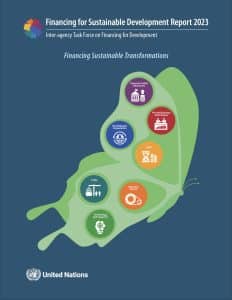
https://developmentfinance.un.org/fsdr2023
Amid growing food and energy crises, an uncertain global economic outlook, and the escalating impacts of climate change, the UN said on 5 April 2023 that a sustainable industrial transformation is needed to close the widening development gap between countries, meet climate targets and achieve the Sustainable Development Goals. The report says urgent, massive investments are needed to accelerate transformations including in electricity supply, industry, farming, transportation, and buildings. According to the report some of the necessary changes are already taking place. The energy crisis caused by the war in Ukraine has spurred investment in global energy transition, which skyrocketed in 2022 to a record $1.1 trillion. Energy transition investments surpassed fossil fuel system investments for the first time in 2022, but these are almost all in China and developed countries. The report finds that most developing countries do not have the resources for investment, unlike their developed counterparts. Climate change, Russia’s invasion of Ukraine, the COVID-19 pandemic, and debt payments up to two times higher than in 2019 have combined to put massive fiscal pressures on most developing countries. This limits their ability to invest in sustainable transformation.
A Breakthrough for People and Planet: Effective and Inclusive Global Governance for Today and the Future
https://highleveladvisoryboard.org/breakthrough/
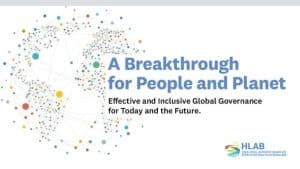
Digitization Update: UN Special Committee on Palestine
The Dag Hammarskjöld Library has digitized the complete documentation of the United Nations Special Committee on Palestine in English and French.
In April 1947, the delegation of the United Kingdom requested a special session of the General Assembly for the purpose of constituting and instructing a Special Committee, to prepare for the consideration, at the regular session of the Assembly, of the question concerning the future government of Palestine (A/286).
In this special session, the General Assembly adopted its resolution 106(S-1) of 15 May 1947 which established the United Nations Special Committee on Palestine.
The Special Committee on Palestine was authorized to ascertain and record facts, and to investigate all questions and issues relevant to the question of Palestine.
It was mandated to examine written or oral testimony from representatives of the population of Palestine, from Governments as well as from other organizations and individuals.
The Special Committee on Palestine was tasked to prepare a report to the General Assembly which was to be communicated to the Secretary-General in time to be circulated to the UN Member States for their consideration in the second regular session of the General Assembly.
The Special Committee completed its work on 31 August 1947. Its report was released under the document symbol A/364, Vol. 1-5.
The fully-digitized documents, with the series symbol A/AC.13/–, include meeting records of the Special Committee and its subcommittees. They can be accessed online in the UN Digital Library.
For more information, please consult the website of the UN Information System on the Question of Palestine (UNISPAL) and the Library’s Research Guide on UN Document Symbols for Ad Hoc Committees.
UN Web TV is now available in all six official languages
https://webtv.un.org/
he Department of Global Communications is pleased to announce the launch of the global UN Web TV streaming platform in the remaining five official languages (Arabic, Chinese, French, Russian, and Spanish), in addition to the English language version. Viewers can watch live and on-demand streaming coverage in all six UN official languages on the web and mobile devices. For easy access, the content of UN Web TV language websites is organized in an intuitive way. The daily Live schedule page provides viewers with the programming guide on what is expected to be streamed live on every language website, along with information and metadata for each event. Viewers can copy the direct live link and embed code of each event in advance to share on websites and social media platforms. The search functionality for each language website enables viewers to type, search and discover video content in any of the six official languages. The live coverage and on-demand content may vary on each language website, depending on the availability of multilingual live interpretation and language metadata for each event.
ILO Open Access Policy
English: https://www.ilo.org/global/about-the-ilo/newsroom/news/WCMS_878728/lang–en/index.htm
French: https://www.ilo.org/global/about-the-ilo/newsroom/news/WCMS_878744/lang–fr/index.htm
Spanish: https://www.ilo.org/global/about-the-ilo/newsroom/news/WCMS_878745/lang–es/index.htm
The International Labour Organization (ILO) has implemented an Open Access policy that will make the use of all its knowledge products easier. The launch of the ILO Open Access policy supports the fundamental ethic that results of publicly funded research or work should be made available to the public to use, with the goal of increasing accessibility, visibility and impact. As of 3 May 2023, all new ILO knowledge products will be freely available for use or reuse without needing to request permission – as long as ILO is cited as the source of material. The policy covers all materials published or made available by ILO ranging from reports and publications to videos and datasets. The ILO Open Access policy will only apply to materials produced from 3 May 2023. Content published before that date will continue to be covered under the pre-existing licensing conditions. ILO will grant Open Access to its products through the use of Creative Commons BY 4.0. licence (CC BY 4.0). This is the most open Creative Commons license, which permits the reproduction, distribution and adaptation (including translation) of work for any purposes, as long as credit is given to the respective author/creator, in this case, the ILO.
Coronavirus Disease (COVID-19)
Global compendium of country knowledge on COVID-19 vaccination (WHO)
https://www.technet-21.org/en/covid-compendium
The Global Compendium of Country Knowledge on COVID-19 vaccination is now available on TechNet21. The Compendium stores over 140 documents and has recorded over 300 visits to the most popular ones. The Compendium is maintained and expanded to reflect the most relevant experiences and learnings from COVID-19 vaccination. The Compendium is a space that: – Facilitates the sharing of documented successes and challenges of national COVID-19 programmes with other countries, development partners, NGOs and entities supporting vaccine rollout. It is an opportunity to inform others on real-time issues, disseminate lessons learned and share possible solutions; – Establishes a knowledge platform to inform planning for expanding vaccination across the life-course in non-emergency settings, and consider how emergency vaccination could be scaled-up in a future health crisis; – Sends “information alerts” when updates become available, so users have access to latest experiences in a comprehensive and organized manner.
Preparedness and Resilience for Emerging Threats (PRET)
https://www.who.int/initiatives/preparedness-and-resilience-for-emerging-threats
To help countries better prepare for future pandemics, The World Health Organization (WHO) launched a new initiative on 26 April 2023 that provides guidance on integrated planning for responding to any respiratory pathogen such as influenza or coronaviruses. The new Preparedness and Resilience for Emerging Threats Initiative, or PRET, incorporates the latest tools and approaches for shared learning and collective action established during the COVID-19 pandemic and other recent public health emergencies. Through the initiative, WHO will use a mode of transmission approach to guide countries in pandemic planning, given that many capacities and capabilities are common among groups of pathogens. PRET answers the call for technical guidance and support for promoting and strengthening integrated preparedness and response, as outlined in World Health Assembly resolutions. The COVID-19 pandemic and other health emergencies have shown that countries need to be operationally ready to respond to infectious disease threats, with tailored preparedness plans in hand and better coordination and collaboration with other sectors such as agriculture.
Prevention of zoonotic spillover: From relying on response to reducing the risk at source (OHHLEP)
https://www.who.int/publications/m/item/prevention-of-zoonotic-spillover
The devastating impact of COVID-19 on human health globally has prompted extensive discussions on how to better prepare for and safeguard against the next pandemic. Zoonotic spillover of pathogens from animals to humans is recognized as the predominant cause of emerging infectious diseases and as the primary cause of recent pandemics. The purpose of this white paper by the One Health High-Level Expert Panel (OHHLEP), an advisory body to the Quadripartite organizations, is to call for enhanced prevention of zoonotic spillover within the triad of Pandemic Prevention, Preparedness, and Response. The paper advocates for the need to reduce the risk of zoonotic disease spillover at source through improved prevention measures, an approach that is more efficient than relying on disease detection and response.
Economic Growth and Sustainable Development
2023 Progress report on the Global Action Plan for Healthy Lives and Well-being for All: What worked? What didn’t? What’s next?
https://www.who.int/initiatives/sdg3-global-action-plan/progress-and-impact/progress-reports/2023
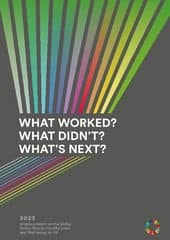
Afghanistan Socio-Economic Outlook 2023 – Executive Summary (UNDP)
https://www.undp.org/afghanistan/publications/afghanistan-socio-economic-outlook-2023
A new study of Afghanistan’s economy demonstrates that without continuity for girls’ education and women’s ability to work, prospects for the country’s recovery will remain grim. The study, released on 18 April 2023 in Kabul by the United Nations Development Programme (UNDP), details how Afghanistan’s economic output collapsed by 20.7 percent following the Taliban takeover in 2021. This unparalleled shock has kept Afghanistan among the poorest countries in the world. And despite tentative signs of recovery, such as a relatively stable exchange rate, an increase in exports, growing demand for labor, and muted inflation, GDP is estimated to have further declined by 3.6 percent in 2022.
Bridging the Gender Digital Divide: Challenges and an Urgent Call for Action for Equitable Digital Skills Development (UNICEF)
https://data.unicef.org/resources/ictgenderdivide/
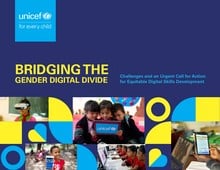
Can countries afford their national SDG 4 benchmarks? (UNESCO GEMR Policy Paper 49)
https://unesdoc.unesco.org/ark:/48223/pf0000385004
A new paper by the Global Education Monitoring Report at UNESCO has revealed that low- and lower-middle-income countries are facing a significant financial shortfall in meeting their national SDG 4 benchmark targets. The paper estimates that 21% of the financing required to achieve these targets remains unaccounted for, resulting in a funding gap of US$97 billion.
The new findings were presented at the education and finance ministers’ high-level panel meeting, which took place on 13 April as part of the World bank/IMF Spring Meetings in Washington D.C. The event focused on policy reforms to increase education spending, while ensuring maximum efficiency of the money spent.
Container Control Programme: Annual Report 2022 (UNODC / WCO)
https://www.unodc.org/res/ccp/ccp-2021-annual-report_html/CCP_AR_2022_22.03.2023.pdf

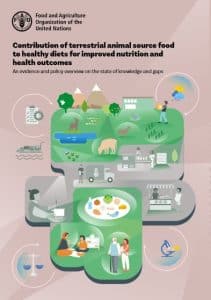
https://www.fao.org/documents/card/en/c/cc3912en
Some consumers may choose veganism, or a pescatarian diet, but meat, eggs and milk, offer crucial sources of much-needed nutrients which cannot easily be obtained from plant-based foods, a new report issued on 25 April 2023 by the UN’s Food and Agriculture Organization says. This is particularly vital during key life stages such as pregnancy and lactation, childhood, adolescence and older age, says the study. It’s the most comprehensive analysis yet of the benefits and risks of consuming animal source foods and is based on data and evidence from more than 500 scientific papers and some 250 policy documents.

https://www.imf.org/-/media/Files/Publications/Books/2023/English/DFGWGPPEA.ashx
The book presents a structured discussion of measuring the key economic and financial dimensions of climate change. It combines economic theory and analysis with real world examples of how climate data can be constructed for different country settings, based on existing climate science and economic data. The book will serve as a reference point for the IMF’s Climate Change Indicators Dashboard (CID). A guiding principle of the book is that there are important climate data gaps, but also practical and innovative approaches to close many of them. The book discusses how to track greenhouse gas emissions by production and consumption (Chapters 1-2), which lead to physical risks (Chapters 3-4) and transition risks (Chapters 5-7) and conclude with cross-border dimensions of climate risks (Chapters 8-9).
Digital Public Goods for the SDGs (UNDP)
https://www.undp.org/publications/digital-public-goods-sdgs
Digital public goods (DPGs) are becoming critical levers for advancing the Sustainable Development Goals (SDGs). This report discusses emerging insights related to their sustainability, replicability and partnerships based on case studies of four digital solutions (three of which are accredited DPGs) and a digital government programme. The research was conducted by the United Nations Development Programme in cooperation with the Digital Impact Alliance.
Digital transformation and land administration: Sustainable practices from the UNECE region and beyond (FAO / UNECE / FIG)
https://www.fao.org/documents/card/en/c/cc1908en

Estimating Global and Country-Level Employment in Agrifood Systems (FAO Statistics Working Paper Series, Issue 23/34)
https://www.fao.org/3/cc4337en/cc4337en.pdf
Around 1.23 billion people were employed in the world’s agrifood systems in 2019, and more than three times that figure, or almost half the world’s population, live in households linked to agrifood systems, according to new research by the Food and Agriculture Organization of the United Nations (FAO). Of these 1.23 billion people, 857 million worked in primary agricultural production, while 375 million worked in the off-farm segments of agrifood systems. The new figures, the first systematic and documented global estimate of its kind, derive from a range of sources and incorporate the widespread use of part-time or seasonal employment in the sector. The figures also refer to agrifood systems rather than agricultural sectors, reflecting the increasing importance of off-farm activities in feeding the world’s population, currently 8 billion and growing.

https://www.undp.org/publications/field-guide-human-development-report-2021/2022-dialogues
This field guide offers ideas, approaches, and entry points to design dialogues that expand the modes of collective sensing, learning and decision-making used to deal with the complex policy challenges articulated by the Human Development Report 2021/2022: Uncertain Times, Unsettled Lives: Shaping our Future in a Transforming World. It focuses on the capacity for meaningful, intentional dialogue to enable modes of thinking, relationships and action conducive to realizing more transformational development futures in the face of uncertainty.
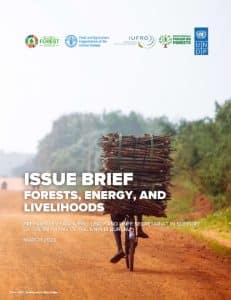
https://www.undp.org/publications/forests-energy-and-livelihoods
The world faces interlinked crises and conflicts, including poverty, inequality, and fragility. Deforestation and forest degradation trends are unsustainable and hundreds of millions of people lack access to clean, affordable energy. Forests and energy are vital for addressing these challenges and accelerating progress on the SDGs. To maximize the contribution of the forest and energy sectors to livelihoods, integrated approaches are critical.
Global Food Crisis Update: Recent Developments, Outlook, and IMF Engagement
https://www.imf.org/en/Publications/IMF-Notes/Issues/2023/04/12/Global-Food-Crisis-Update-Recent-Developments-Outlook-and-IMF-Engagement-531948
The global food crisis remains a major challenge. Food insecurity fueled by widely experienced increases in the cost of living has become a growing concern especially in low-income countries, even if price pressures on global food markets have softened somewhat since the onset of Russia’s war in Ukraine in February 2022. Targeted assistance to the most vulnerable households combined with policy measures to support trade and agriculture systems, including to better cope with climate shocks, can help countries withstand the fallout of the ongoing food crisis while building longer-term resilience. The IMF, working in close cooperation with other international organizations, has continued to contribute to international efforts to alleviate food insecurity by providing policy advice, capacity development, and financial support through Upper Credit Tranche Arrangements and the new Food Shock Window. New commitments to countries particularly affected by the global food crisis total $13.2 billion since February 2022, of which $3.7 billion has been disbursed as of March 2023.
Global Report on Food Crises 2023
https://www.fsinplatform.org/global-report-food-crises-2023
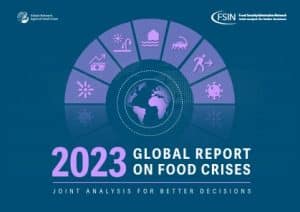
Health Inequality Monitor
https://www.who.int/data/inequality-monitor
On 20 April 2023, WHO has launched the Health Inequality Data Repository, the most comprehensive global collection of publicly available disaggregated data and evidence on population health and its determinants. The repository allows for tracking health inequalities across population groups and over time, by breaking down data according to group characteristics, ranging from education level to ethnicity. The data from the repository show that, in just a decade, the rich-poor gap in health service coverage among women, newborns and children in low- and middle-income countries has nearly halved. They also reveal that, in these countries, eliminating wealth-related inequality in under-five mortality could help save the lives of 1.8 million children. The Health Inequality Data Repository (HIDR) includes nearly 11 million data points and consists of 59 datasets from over 15 sources. The data include measurements of over 2000 indicators broken down by 22 dimensions of inequality, including demographic, socioeconomic and geographical factors. Topics covered include: the Sustainable Development Goals (SDGs); COVID-19; reproductive, maternal and child health; immunization; HIV; tuberculosis; malaria; nutrition; health care; non-communicable diseases and environmental health.

https://www.who.int/publications-detail-redirect/978920068315
Large numbers of people are affected by infertility in their lifetime, according to a new report published on 4 April 2023 by WHO. Around 17.5% of the adult population – roughly 1 in 6 worldwide – experience infertility, showing the urgent need to increase access to affordable, high-quality fertility care for those in need. The new estimates show limited variation in the prevalence of infertility between regions. The rates are comparable for high-, middle- and low-income countries, indicating that this is a major health challenge globally. Lifetime prevalence was 17.8% in high-income countries and 16.5% in low- and middle-income countries.
Intention to action series: people power. Perspectives from individuals with lived experience of noncommunicable diseases, mental health conditions and neurological conditions (WHO)
https://www.who.int/publications/i/item/9789240069725
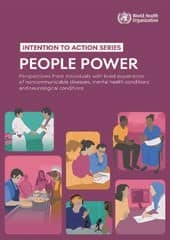
Is an End to Child Marriage within Reach? Latest trends and future prospects (UNICEF)
https://data.unicef.org/resources/is-an-end-to-child-marriage-within-reach/
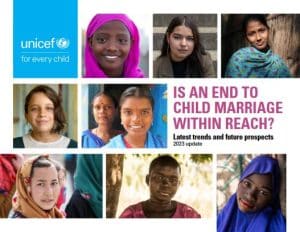
Making the European Green Deal Work for People: Role of Human Development in Green Transition (World Bank)
https://www.worldbank.org/en/region/eca/publication/eu-green-deal-for-people
As the world continues to grapple with climate change impacts, policies aiming to reduce greenhouse gas emissions and decouple the economy from natural resource consumption must also address the green transition’s unintended consequences, particularly for the poor and vulnerable. Climate change is a significant challenge of our time, and the European Green Deal (EGD) serves as the European Union’s response to the issue. Combining a wide range of regulations, policies, and interventions, the success of the green transition hinges on incorporating appropriate human development policies to support the process. In its regional report the World Bank identifies education, health, and social protection policies crucial for a successful green transition in Europe. … The report outlines four criteria for a successful green transition: effectiveness, efficiency, sustainability, and attainability. Each criterion addresses specific aspects of the transition.
National programmes for age-friendly cities and communities: a guide (WHO)
https://www.who.int/publications/i/item/9789240068698

Rising Global Food Insecurity: Assessing Policy Responses
https://www.fao.org/3/cc5392en/cc5392en.pdf
A new report issued by the WTO, the UN Food and Agriculture Organization (FAO) and the World Bank Group (WBG) on 13 April urges the G20 to coordinate efforts on tackling the root causes of food insecurity. The report emphasizes the need for a unified approach and suggests that the G20 is in a unique position to facilitate collective action. It recommends focusing on improving the supply of development finance to support agriculture investments and to promote sustainable and inclusive economic growth in rural areas. The report was produced at the request of G20 leaders in their G20 Bali Declaration of November 2022, where they asked the FAO and WBG to undertake a mapping exercise on the global response to rising food insecurity, identify any gaps in this response, and recommend further actions to eradicate hunger.
Standards of practice to guide ecosystem restoration: A contribution to the United Nations Decade on Ecosystem Restoration – Summary report
https://doi.org/10.4060/cc5223en
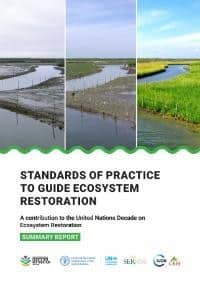

https://library.wmo.int/index.php?lvl=notice_display&id=22265
From mountain peaks to ocean depths, climate change continued its advance in 2022, according to the annual report from the World Meteorological Organization (WMO). Droughts, floods and heatwaves affected communities on every continent and cost many billions of dollars. Antarctic sea ice fell to its lowest extent on record and the melting of some European glaciers was, literally, off the charts. The State of the Global Climate 2022 shows the planetary scale changes on land, in the ocean and in the atmosphere caused by record levels of heat-trapping greenhouse gases. For global temperature, the years 2015-2022 were the eight warmest on record despite the cooling impact of a La Niña event for the past three years. Melting of glaciers and sea level rise – which again reached record levels in 2022 – will continue to up to thousands of years.
State of the World Population 2023: 8 billion lives, infinite possibilities; the case for rights and choices (UNFPA)
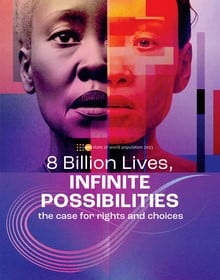
German summary: https://www.dsw.org/weltbevoelkerungsbericht/
On 15 November 2022, the world’s population reached a landmark 8 billion people. It’s a staggering number – but what does it mean? What are the implications for the lives, rights, health and future offspring of all these people? Instead of celebrating a milestone in global development, media reports have been overwhelmingly fearful: The world is bursting at the seams, migration is out of control, there’s no one to look after all the old people, women need to reproduce more, or less. As alarmist rhetoric circulates and governments increasingly seek to influence fertility rates, in our latest State of World Population report we ask: What’s fact, what’s fiction, and what’s the future beyond the figures?
The State of the World’s Children 2023: For Every Child, Vaccination (UNICEF)

Executive Summary in German: https://bit.ly/3KZqv5f
Executive Summary in Italian: https://bit.ly/3UYu28t
The public perception of the importance of vaccines for children declined during the COVID-19 pandemic in 52 out of 55 countries studied, UNICEF warned on 20 April 2023 in a new report on immunization. “The State of the World’s Children 2023: For Every Child, Vaccination” reveals the perception of the importance of vaccines for children declined by more than a third in the Republic of Korea, Papua New Guinea, Ghana, Senegal and Japan after the start of the pandemic. In the new data, collected by The Vaccine Confidence Project and published on 20 April 2023 by UNICEF, China, India and Mexico were the only countries studied where the data indicates the perception of the importance of vaccines held firm or even improved. In most countries, people under 35 and women were more likely to report less confidence about vaccines for children after the start of the pandemic. Vaccine confidence is volatile and time specific. Additional data collection and further analysis will be required to determine if the findings are indicative of a longer-term trend. Despite the falls, overall support for vaccines remains relatively strong. In almost half the 55 countries studied more than 80 per cent of respondents perceived vaccines as important for children. However, the report warns the confluence of several factors suggest the threat of vaccine hesitancy may be growing. These factors include uncertainty about the response to the pandemic, growing access to misleading information, declining trust in expertise, and political polarisation.
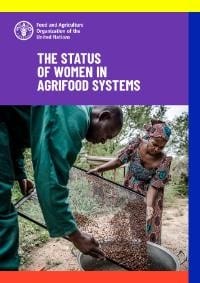
https://www.fao.org/documents/card/en/c/cc5343en
Tackling gender inequalities in agrifood systems and empowering women reduces hunger, boosts the economy, and reinforces resilience to shocks like climate change and the COVID-19 pandemic, reveals a new report by the Food and Agriculture Organization of the United Nations (FAO) on 13 April 2023. The report, the first of its kind since 2010, goes beyond agriculture to provide a comprehensive picture of the status of women working across agrifood systems— from production to distribution and consumption. The report highlights that globally, 36 per cent of working women are employed in agrifood systems, along with 38 per cent of working men. However, women’s roles tend to be marginalized and their working conditions are likely to be worse than men’s –irregular, informal, part-time, low-skilled, or labour-intensive. Likewise, women engaged in wage employment in agriculture earn 82 cents for every dollar that men earn.
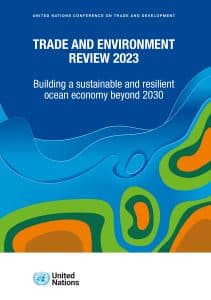
https://unctad.org/ter2023
https://unctad.org/publication/trade-and-environment-review-2023
The ocean holds vast opportunities for developing countries to build more innovative and resilient economies. But climate change, pollution and overfishing threaten those opportunities and the livelihoods of about 3 billion people who rely on the ocean for food and income. UNCTAD’s Trade and Environment Review 2023, published on 8 May, analyzes the world’s ocean economy – worth an estimated $3-6 trillion – and assesses how human activity and multiple global crises have significantly affected different sectors, including fishing, seafood, shipping and coastal tourism. The report, presented at the 3rd UN Trade Forum, calls for a global trade, investment and innovation “Blue Deal” to sustainably use our ocean, home to 80% of all life. It builds on the recommendations from the 4th UN Oceans Forum and the 2nd UN Ocean Conference held in 2022.
UN DESA Policy Brief No. 152: Population, education and sustainable development: Interlinkages and select policy implications
https://www.un.org/development/desa/dpad/publication/un-desa-policy-brief-no-152-population-education-and-sustainable-development-interlinkages-and-select-policy-implications/
The demographic transition, including decreased fertility and child dependency, brings opportunities to boost the human capital of young people and adults alike.
UN DESA Policy Brief No. 153: India overtakes China as the world’s most populous country
https://www.un.org/development/desa/dpad/publication/un-desa-policy-brief-no-153-india-overtakes-china-as-the-worlds-most-populous-country/
Taking account of future population trends in national development planning is essential for achieving the Sustainable Development Goals, in particular, those related to poverty, food security, health, education, gender equality, decent work, inequality, urbanization and the environment, and for ensuring that no one is left behind.

https://www.fao.org/documents/card/en/c/CC5210EN
Mountain tourism, if managed sustainably, has the potential to boost the incomes of local communities and help preserve their natural resources and culture. However, a lack of data and knowledge on the subject is preventing them from fully seizing such opportunities. A report published on 26 April 2023 by the Food and Agriculture Organization of the United Nations (FAO), the World Tourism Organization (UNWTO) and the Mountain Partnership (MP) seeks to address such gaps in order to reach a better understanding of the subject. The publication also identifies trends and provides a set of recommendations to advance the measurement of mountain tourism, including progress on official tourism statistics and the use of big data and new technologies.
Who picks (y)our waste? Evidence-based observations and policy priorities for equitable development (UNDP Development Future Series, April 2023)
https://www.undp.org/publications/who-picks-your-waste-evidence-based-observations-and-policy-priorities-equitable-development
Waste-pickers are one of the most crucial yet often ignored segments of the water, sanitation and hygiene (WASH) programming. These workers often labour in hazardous conditions under the uncertainty of informal employment but are the key to keeping the environment clean and our cities (particularly urban spaces) safe. Challenges these workers face—such as limited earning capacity, increased risk of falling into poverty and insecurities of food, income, work and livelihood— have been further accentuated by the COVID-19 pandemic. These challenges have been noted to be worse for women – who are more vulnerable to significant impacts on their health – with potential intergenerational impacts.2 This brief, drawing from broad themes of socio-economic insecurity among informal workers across developing nations, presents on-ground evidence on demographic, employment, identification, housing and social security characteristics of waste pickers from across ten states in India. It also discusses some policy directions to ensure structural transformation towards resilient and equitable development for this cohort.
International Peace and Security
75 Years of United Nations Peacekeeping: Peace Begins With Me – Photo Exhibit
https://www.un.org/en/exhibits/exhibit/75-years-un-peacekeeping

Concept note for the Security Council high-level open debate on the theme “Futureproofing trust for sustaining peace”
English, French & Spanish: https://undocs.org/S/2023/283
The Security Council held an open debate at the ministerial level on the theme “Futureproofing trust for sustaining peace” under the agenda item “Peacebuilding and sustaining peace” on 3 May 2023. Switzerland, the Security Council President for May 2023, has prepared this concept note to guide discussions on the topic of the debate.

https://bit.ly/3AsrTIQ
This Analytical Brief provides an overview of data and trends in the management of violent extremist prisoners (VEPs); analyses the main challenges that have been noted regarding the management of VEPs across States, and it identifies key elements that could be of help to States in strengthening overall efforts in the field of terrorism prevention and management of terrorist offenders.
Thematic Review on Climate-Security and Peacebuilding (UNU-CPR)
https://cpr.unu.edu/publications/articles/thematic-review-climate-security-peacebuilding.html
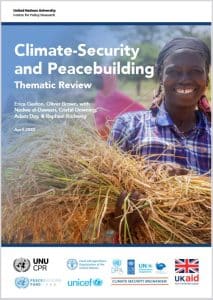
Uncrewed Aerial, Ground, and Maritime Systems: A Compendium (UNIDIR)
https://unidir.org/publication/uncrewed-aerial-ground-and-maritime-systems-compendium
This compendium is intended to provide policymakers, diplomats and other non-technical interested parties with an introductory overview and comparison of technological developments and their security implications relating to uncrewed aerial, ground, and maritime systems. In 2022, UNIDIR released primers for each of the three domains in which uncrewed systems operate (air, land and sea). While each primer gives an in-depth introduction into each type of uncrewed system, this compendium provides a comparative overview that highlights the common developments and security implications of these systems, as well as what distinguishes them. The focus of the compendium is on describing the main areas of technological innovation and development related to the key components that comprise uncrewed systems, outlining the anticipated areas of progress and potential concern, as well as areas of overlap between key enabling technology across the three types of systems.
This compendium aims to provide policymakers, diplomats and other non-technical interested parties with an introductory overview and comparative overview of technological developments and their security implications relating to uncrewed systems in the air, land, and maritime domains. The compendium, as well as the primers, also serve as technical guides on issues relating to uncrewed systems for use within frameworks and processes where such systems are relevant and discussed, such as the Group of Governmental Experts (GGE) on the continuing operation and relevance of the United Nations Register of Conventional Arms (UNROCA) and its further development, the Conference of States Parties to the Arms Trade Treaty, and the GGE on Lethal Autonomous Weapons Systems.
Wading Murky Waters: Subsea Communications Cables and Responsible State Behaviour (UNIDIR)
https://unidir.org/publication/wading-murky-waters-subsea-communications-cables-and-responsible-state-behaviour
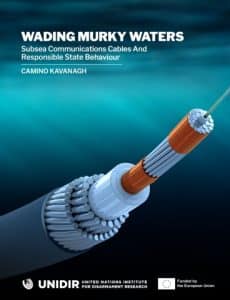
Women, Peace and Security Annual Report 2020 – 2021 (UN Women)
https://www.unwomen.org/en/digital-library/publications/2023/04/women-peace-and-security-annual-report-2020-2021
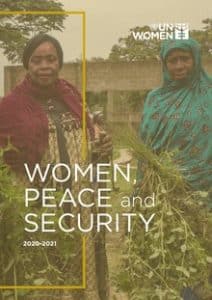
Human Rights
Briefer on How international human rights standards and mechanisms help protect journalists (OHCHR)
https://www.ohchr.org/sites/default/files/documents/issues/ruleoflaw/How-HR-standards-mechanisms-protect-journalists.pdf
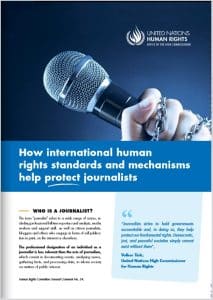
Corporal Punishment and the Death Penalty in Afghanistan, May 2023 (UNAMA)
https://unama.unmissions.org/corporal-punishment-and-death-penalty-afghanistan
The use of corporal punishment by the de facto authorities in Afghanistan runs counter to international law and must stop, the UN Assistance Mission in the country (UNAMA), said on 8 May 2023. “Corporal punishment is a violation of the Convention against Torture and must cease,” said UNAMA’s human rights chief Fiona Frazer, stressing that the UN is “strongly opposed” to the death penalty. She called on the de facto authorities to establish an “immediate moratorium” on executions.
In this new report, UNAMA said that it had documented “a range of forms of corporal punishment” carried out by the Taliban since their return to power on 15 August 2021 after dislodging the democratically-elected Government, “including lashings or floggings, stoning, forcing people to stand in cold water, and forced head shaving”. In the last six months alone, 274 men, 58 women and two boys have been publicly flogged. According to the report, the legal system in Afghanistan is currently “failing to safeguard minimum fair trial and due process guarantees”. UNAMA warned that the Taliban’s refusal to grant licences to women defence lawyers and the exclusion of women judges from the judicial system are impacting women and girls’ access to justice.
Global toolkit for law enforcement agents: freedom of expression, access to Information and safety of journalists (UNESCO)
https://unesdoc.unesco.org/ark:/48223/pf0000383978
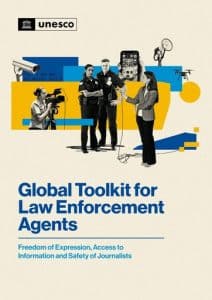
ILO Guidance note: Wage protection for migrant workers
English: https://www.ilo.org/global/topics/labour-migration/publications/WCMS_878456/lang–en/index.htm
French: https://www.ilo.org/global/topics/labour-migration/publications/WCMS_878480/lang–fr/index.htm
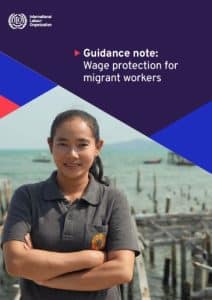

https://www.unfpa.org/publications/measuring-technology-facilitated-gender-based-violence-discussion-paper
Technology-facilitated gender-based violence (TF GBV) is an act of violence perpetrated by one or more individuals that is committed, assisted, aggravated and amplified in part or fully by the use of information and communication technologies or digital media, against a person on the basis of their gender. This paper aims to guide the discussion of key considerations relevant to the measurement of TF GBV, and is informed by a rigorous scoping review of approaches, tools, instruments and questions used to measure TF GBV.
Technology-facilitated violence against women: Taking stock of evidence and data collection (UN Women)
https://www.unwomen.org/en/digital-library/publications/2023/04/technology-facilitated-violence-against-women-taking-stock-of-evidence-and-data-collection
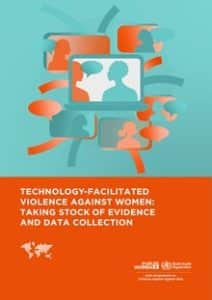
Toolkit: Ratifying the Optional Protocol to the International Covenant on Economic, Social and Cultural Rights (OHCHR)
https://www.ohchr.org/en/documents/tools-and-resources/toolkit-ratifying-optional-protocol-international-covenant-economic
This toolkit presents the benefits of ratifying the Optional Protocol to the International Covenant on Economic, Social, and Cultural Rights (OP-ICESCR), answers questions on its content and application, and provides a simplified version of the provisions of the Optional Protocol.
Humanitarian Affairs
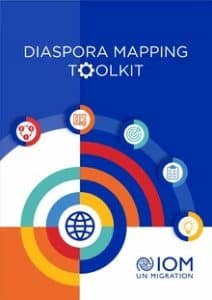
English, French & Spanish: https://publications.iom.int/books/diaspora-mapping-toolkit
The toolkit builds on IOM’s rich experience of over 150 diaspora mappings implemented across diverse contexts, this Toolkit presents a systematic, comprehensive yet very flexible and agile approach to conducting diaspora mappings in differing contexts. By following the proposed clear guidance on how to collect and analyse data on diaspora communities, decision makers will have the possibility to create more strategic and evidence-based policies empowering diaspora members to contribute and engage thus maximizing their contributions to development. This innovative Toolkit is the first global guidance tool bringing together a myriad of experiences from the field, the expertise of practitioners and high scientific rigour. This methodology successfully piloted in Ecuador, Eswatini and Senegal, covers all possible data collection methods, starting from qualitative studies based on key informants and focus groups all the way to capturing substantial amounts of quantitative data on diasporas. This Toolkit crystalizes IOM’s commitment to developing effective, inclusive and data-based policies. Each component reflects a rigorous and standardized approach to policymaking, taking into consideration the specificities of each territory, the dynamics on the ground and the multiple stakeholders interacting with transnational communities.
Harnessing Data Innovation for Migration Policy: A Handbook for Practitioners (IOM)
https://publications.iom.int/books/harnessing-data-innovation-migration-policy-handbook-practitioners
The Practitioners’ Handbook provides first-hand insights into why and how non-traditional data sources can contribute to better understanding migration-related phenomena. The Handbook aims to (a) bridge the practical and technical aspects of using data innovations in migration statistics, (a) demonstrate the added value of using new data sources and innovative methodologies to analyse key migration topics that may be hard to fully grasp using traditional data sources, and (c) identify good practices in addressing issues of data access and collaboration with multiple stakeholders (including the private sector), ethical standards, and security and data protection issues.
The role of media narratives in shaping public opinion toward refugees: A comparative analysis (IOM, Migration Research Series No. 72)
https://publications.iom.int/books/mrs-no-72-role-media-narratives-shaping-public-opinion-toward-refugees-comparative-analysis
The speed and scale of human displacement precipitated by the conflict in Ukraine is unprecedented in post-Second World War Europe. Also unprecedented has been the outpouring of public support and the tangible legal and policy measures enacted to welcome and support Ukrainian refugees, both in Europe and elsewhere. This stands in contrast with the fraught and often conflictual approach that has characterized public policy discussions of asylum in previous years, including the last time that Europe was confronted by a large-scale influx of refugees in 2015. Media narratives around migration play a key role in shaping political will and policy regarding asylum. In this paper, we analyse the dynamics of press coverage of large-scale conflict-affected migration in Europe through two case studies: the current Ukrainian displacement; and the 2015 refugee “crisis”, which was due in large part to the inflow of Syrian refugees. We apply a combination of sentiment analysis and qualitative thematic analysis to explore how media discourses have shaped the narrative around these two influxes and probe the perception that race has played an outsized influence in framing those narratives. Our aim is to share the tools of our methodological approach, along with our findings, to inform and support those working with migrants and refugees. Previous research has grouped migration narratives into three main categories: migrants as a benefit to the communities that receive them; migrants as victims needing support from destination communities; and migrants as a cultural, security, economic, and – as highlighted by the pandemic – health threat to receiving communities (Banulescu-Bogdan, 2022). Our review certainly bears out these themes and illustrates some telling differences in the coverage of both crises. Our hope is that this analysis may offer clues as to how to sustain support for Ukrainian refugees in the longer term – when we know public support often wanes – while enhancing the global response in support of all refugees.
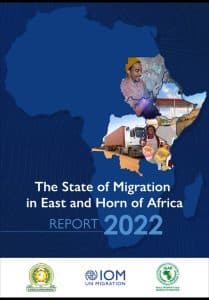
https://publications.iom.int/books/state-migration-east-and-horn-africa-report-2022
Kenya’s government, in partnership with the International Organization for Migration (IOM), the Intergovernmental Authority on Development (IGAD), and the East African Community (EAC), has launched the first comprehensive study on mobility dimensions of regional integration in the East and Horn of Africa. The report, covering the 12 countries in the region, says regional integration and human mobility will advance socio-economic development, and identifies trade and labour mobility, as the key benefits.
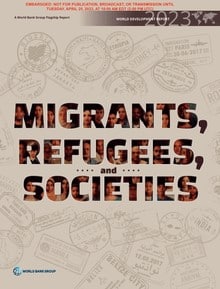
Report in English, Overview in English, French, Spanish & Portuguese:
https://www.worldbank.org/en/publication/wdr2023
Populations across the globe are aging at an unprecedented pace, making many countries increasingly reliant on migration to realize their long-term growth potential, according to a new report from the World Bank, released on 25 April 2023. The report identifies this trend as a unique opportunity to make migration work better for economies and people. Wealthy countries as well as a growing number of middle-income countries—traditionally among the main sources of migrants—face diminishing populations, intensifying the global competition for workers and talent. Meanwhile, most low-income countries are expected to see rapid population growth, putting them under pressure to create more jobs for young people.
Newsletter Archive: https://unric.org/en/unric-info-point-library-newsletter-archive

